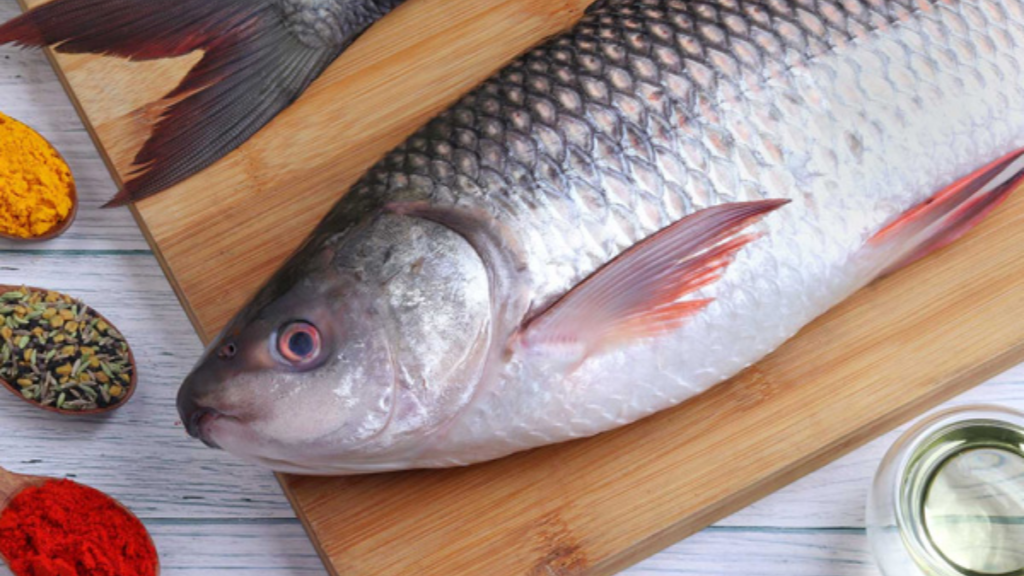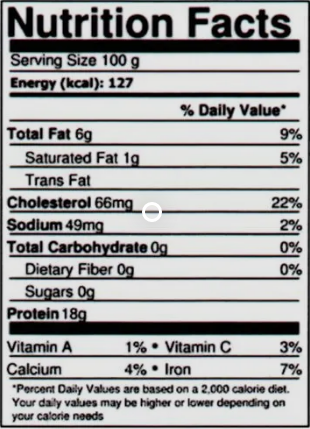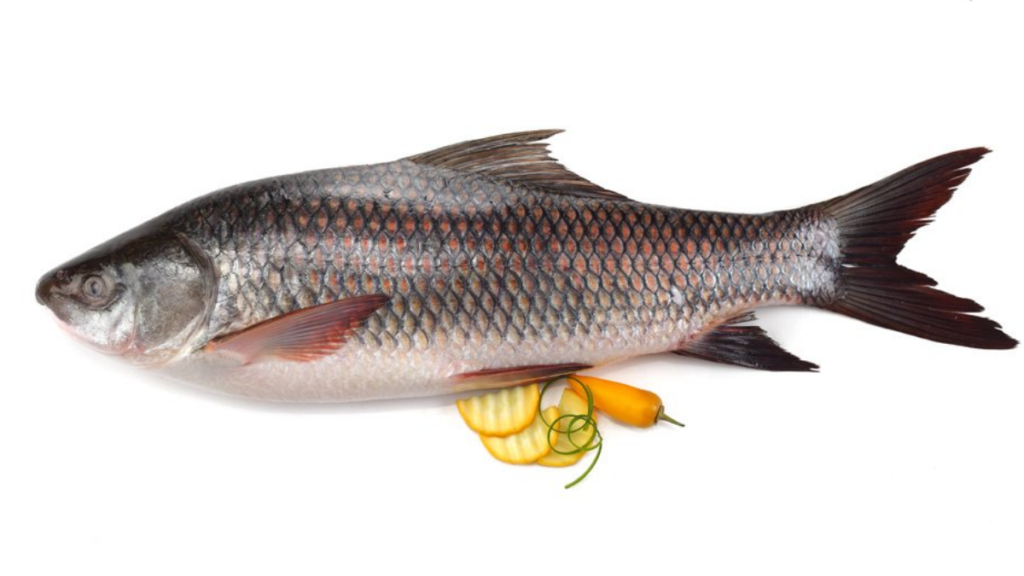Labeo rohita’s nutrition facts are pretty interesting. The fish have low fat and high protein content, making them a good source of meat protein. A recent study conducted at the Department of Fisheries, Raipur, India, found that fish fed with 30 percent crude protein gain the most weight, while those on a diet of no animal protein gained the least weight. The researchers also noted that the optimum amount of proteins is about 30%.
Labeo Rohita Nutrition Facts
What Is Labeo Rohita(Rohu Fish)?
The rohu fish (Labeo rohita) is a large omnivore found throughout south and southeast Asia in lakes and rivers’ weedy, slow-flowing, or standing waters. It is also known as the ruee Rui or tapra rohu. The flesh of rohu is white, soft, smooth in texture, and mild, with almost no fishy flavor. It should be enjoyed by just about anyone, although rohu, like all carp, has a spine problem similar to milkfish. The American Heart Association suggests that everyone eats fish, especially fatty fish like rohu high in omega-three fatty acids and polyunsaturated fatty acids. According to the American Heart Association, adults should aim for two 3.5-ounce portions of fish each week. In the United States, you may readily find rohu fish by going to a nearby Indian frozen foods store.
What Do Rohu Fishes Look Like?
The body of Labeo rohita is symmetrical and extended on both sides, with a more arched dorsal profile than the ventral profile. Their bodies are covered in cycloid scales, but their heads are devoid of scales. In addition, they lack teeth in their jaws. Likewise, this fish has a short head, a pointed face, and a lower lip with frills. They have a silvery grey body with a golden brown belly and seven fins on their body, none of which are covered in scales. This fish has thick fringed lips and a crescentic transverse aperture in its mouth.
Is Labeo Rohita Healthy For You?
While Fat-Free Whipped Topping has fewer calories than regular Whipped Topping, it does have some advantages. It’s sugar-free and low in saturated fat, and it’s perfect for sprinkling on fresh fruit or using as a frosting foundation.
Here are the health benefits of Rohu(Labeo Rohita Fish):
Source of vitamin D
Rohu fish texture is white, non-oily, and delicious. It is a fantastic source of high-quality protein and omega-3 fatty acids, good for the body. It also contains vitamin C and is a good source of vitamin D.
Good for the heart
Rohu fish is beneficial for a variety of heart conditions. It has a high concentration of omega-three fatty acids, which can help to reduce inflammation, protect your heart, and prevent chronic disease.
Suitable for Blood sugar Patients
Rohu fish is a healthy option for people with diabetes. Low vitamin D levels are frequent in persons with diabetes; therefore, including rohu fish in your diet is a great way to boost your intake. Some scientists and experts believe that eating fish can help prevent type 2 diabetes.
Joints benefits
Fish consumption as part of a well-balanced diet has been demonstrated to reduce the symptoms of rheumatoid arthritis, a disease that causes the joints to enlarge. Recent research has also discovered a link between omega three fats and osteoarthritis, implying that consuming more seafood may help to prevent the disease.
Can Pregnant Women Eat Rohu Fish?
According to the Dietary Guidelines for Americans, pregnant women should eat a variety of cooked seafood 2-3 times a week. Yet, the average pregnant woman in the United States eats less than half a serving. The need for nutrients in fish is extreme during pregnancy, and thus expectant mothers must eat more seafood. Protein is necessary to develop a baby’s skin, muscles, hair, and bones. To sustain their growing baby, expectant mothers require an additional 25 grams of protein every day. Vitamin D aids in the absorption of calcium, which is necessary for the development of a baby’s bones, teeth, heart, nerves, and muscles and the health of the mother’s bones and teeth. Vitamin D may also assist in reducing the risk of high blood pressure during pregnancy. Iron aids in transporting oxygen from a woman’s bloodstream to her unborn child, and iron also aids in mothers’ immune systems. Most expectant mothers begin their pregnancies with insufficient iron in their diets.
How To Eat Them?
Rui is an entirely vegetarian fish, although their food preferences later grow older. Rohu fry eats mostly zooplankton, whereas adults eat phytoplankton and submerged plants. They also prefer to eat bread, which is why it’s used as bait to hook them. This fish feeds mainly by sieving the water with their thin hair-like gill rakers in an organic environment. The fish feed by nibbling the food with their mouth because they lack teeth in their jaw. In aquaculture, Rohu fish are fed artificial feed and a diet rich in proteins, carbs, and lipids. Wet and dry pellets are the two forms of artificial feed available for rohu fish. Wet pellet feed is made from carboxymethylcellulose or gelatin, but it cannot be stored for long periods.
On the other hand, dry pellet feed is easy to carry and comes in two types: sinking and floating. In South Asian marketplaces, you may quickly find rohu fish or run for food. This vegetarian dish is a popular food source for many large fish and aquatic animals, apart from humans. Turtles, ducks, water-breathing invertebrates, and larger fish, for example, find fingerlings to be easy prey.
Conclusion
The rohu is a highly nutritious fish, and it is rich in omega-3 fatty acids and is easily digested. This type of fish contains low sodium levels, making it a good choice for pregnant women. It is also recommended to be eaten by adults. While consuming fish is beneficial for pregnant women, children should not consume it. It is best to avoid eating it if you are pregnant or breastfeeding.



